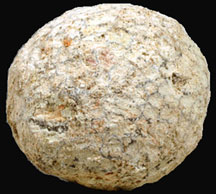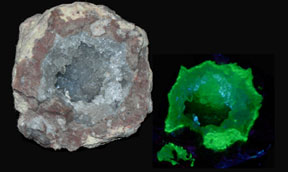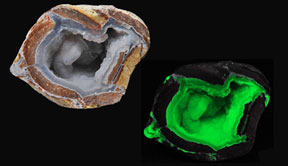
Geodes are essentially hollow, spherical to egg-shaped masses of mineral matter. They are geological secondary structures that occur in certain sedimentary and volcanic rocks and are themselves of sedimentary origin formed by chemical precipitation. Geodes form by either one of two processes:
- by the filling of vesicles (gas bubbles) in volcanic to sub-volcanic rocks by minerals deposited from hydrothermal fluids or
- by the dissolving of sedimentary nodules or concretions (that were deposited at the same time within the rock formations in which they are found) and partial filling by the same or other minerals precipitated from groundwater or hydrothermal fluids.









